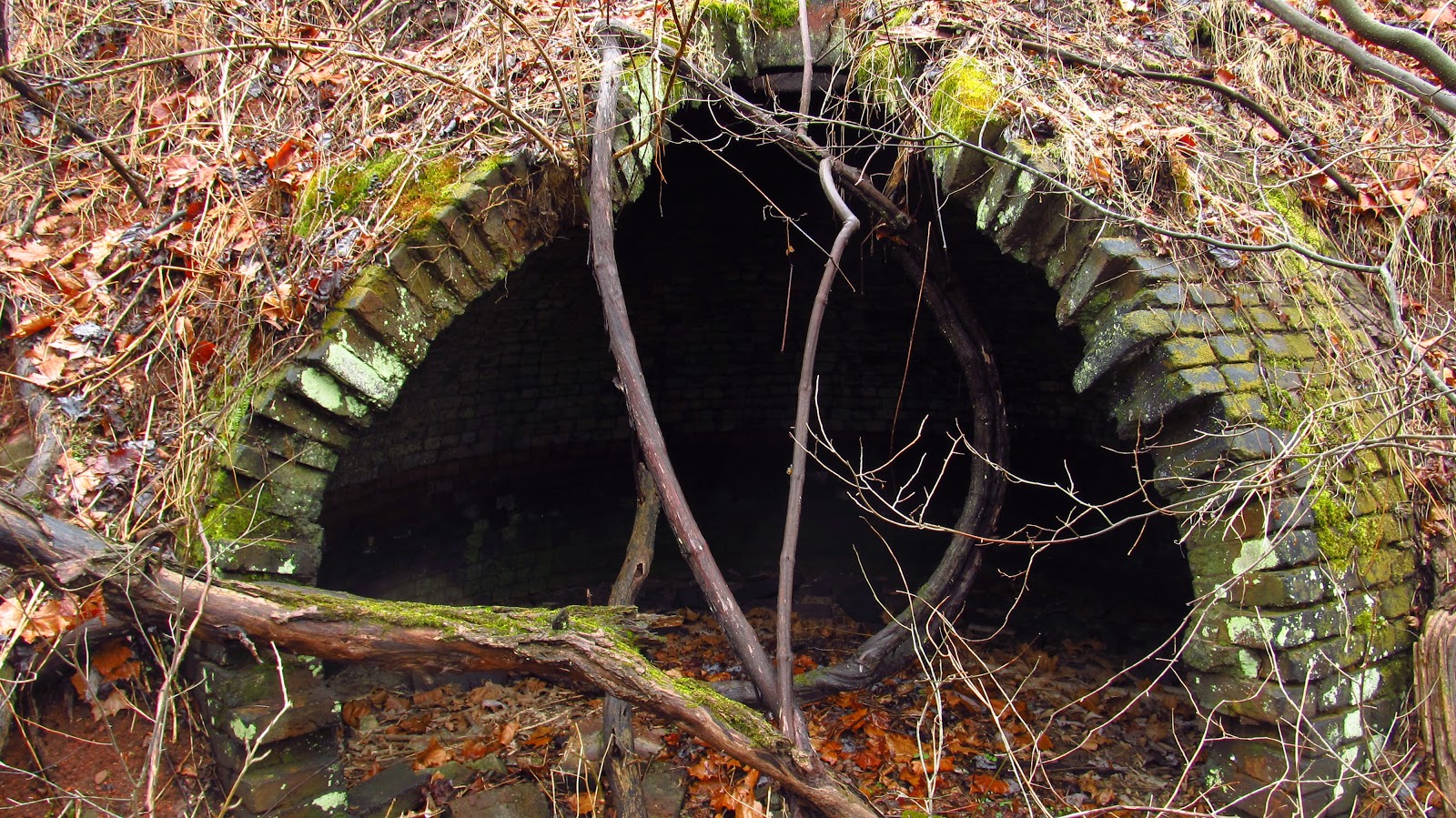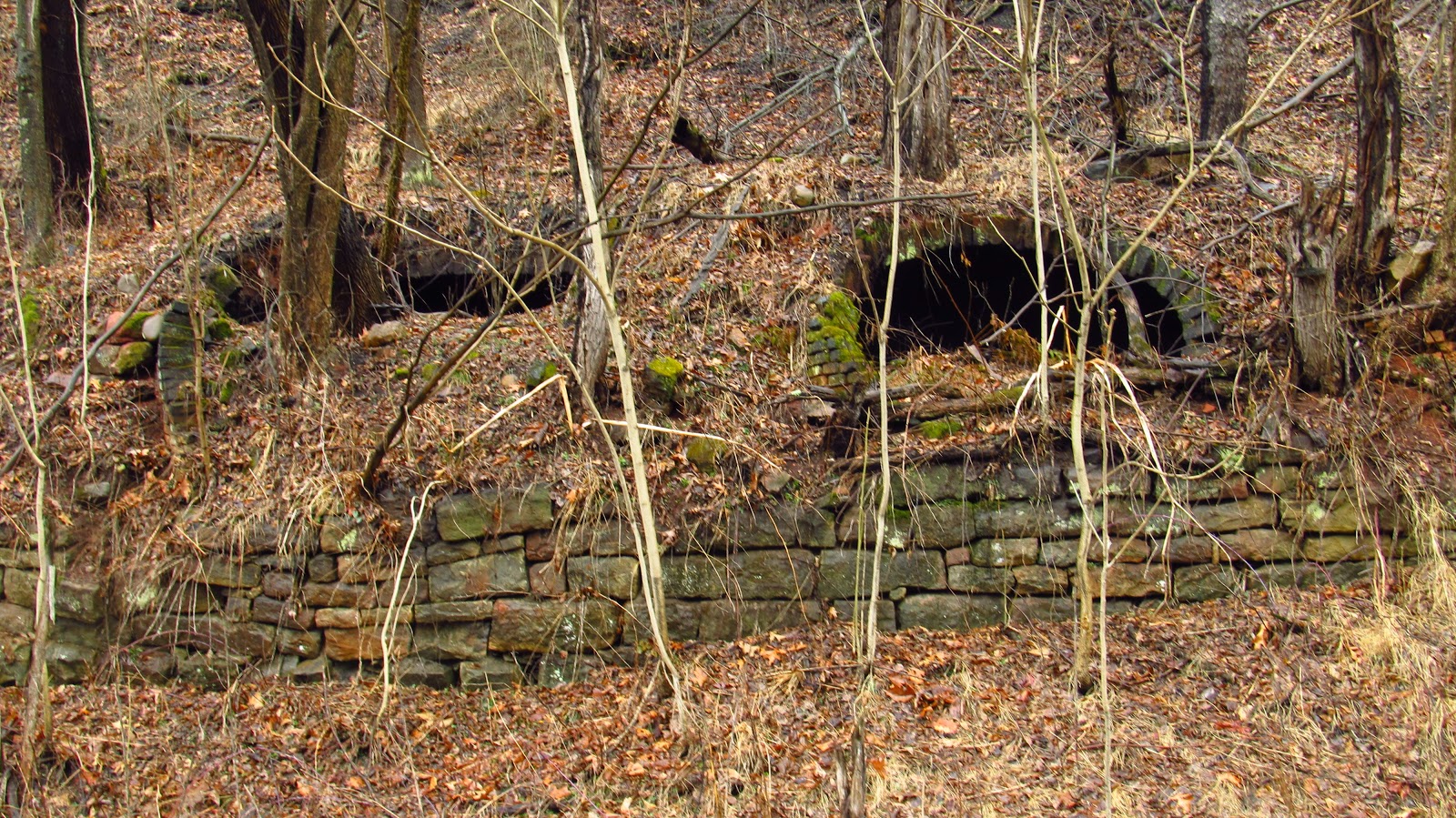This past Saturday we took a walk down the current CSX tracks to take a look at the old coke ovens scattered along the tracks. There were four coke plants located along the tracks between Dawson and Broadford and we found them all!! These are some of the earliest Coke Works in the region. In fact Fayette Coke Works is THE first.
The Pittsburgh and Connellsville (P&C) Railroad reached Connellsville from Turtle Creek in 1857. For more than a decade prior to this, the first small commercially successful coke manufacturers were floating their product down the Youghiogheny, Monongahela and Ohio rivers and selling their wares in Cincinnati and later in Pittsburgh.
The Pittsburgh and Connellsville Railroad operated this railway until it was leased to the B&O for fifty years effective January 1, 1876. The B&O held onto it until they were merged into the Chesapeake and Ohio Railway on April 30, 1987 and that signaled the end of the B&O. On July 31, 1987 the C&O merged into CSX and they have been CSX tracks ever since.
Fayette Coke Works
Back in 1841 Provance McCormick and James Campbell, two boat builders and carpenters, along with John Taylor, a farmer who also owned a small mine near Broadford, decided to take a stab at the coke business. Taylor built two ovens on his land. McCormick and Campbell made the coke and built two ninety foot boats. In Spring of 1842 they had made enough coke to fill the boats with 800 bushels.
With the Youghiogheny River high from the Spring thaw they decided to boat the coke to Cincinnati to see if they could sell it there. Upon arriving at Cincinnati they had a tough time finding a buyer. Campbell stayed with the boats and shipment for three weeks selling small quantities. The balance of the coke was then traded for a patent iron grist mill. When they got the grist mill back to Connellsville they found it did not work. They ended up selling the grist mill for $30 in Connellsville. The trip was considered a failure.
Some of that coke had made it to Dayton by way of the canal and found its way into the hands of Judge Herman Gebhart. Gebhart was a Foundryman in Dayton and a former resident of Fayette County. The coke worked good in his foundry and he sent word back to Connellsville asking for more. McCormick, Campbell and Taylor were not going to make that trip again.
In 1843 the two ovens on the Taylor land were rented to James, Sample and Mordecai Cochran. The Cochrans made 1,300 bushels of 24 hour coke and boated it to Cincinnati where they found a buyer in Iron Maker Miles Greenwood. Greenwood was an early Cincinnati industrialist, very active in the community, as well as President of the Cincinnati Fire Department. He bought all the coke.
This was the first commercial sale of Connellsville Coke. In time those two ovens would turn into 130 ovens and be known as the Fayette Coke Works and would operate into the 1920's.
 |
| The first intact oven at Fayette. The man that owns the land said he has eight ovens on his property. He takes care of them and keeps them cleared. |
 |
| Obviously this one collapsed. |
 |
| I have no idea (and I'm sure nobody does) of what happened to the original two. Maybe some of these were but they were most certainly rebuilt. |
 |
| Some nice floor tile intact in this one. |
 |
| Somebody lined the floor with bricks later. |
 |
| Looking down the tracks toward Dawson. |
 |
| A little bit of intact wall. |
The next set of ovens heading down the tracks belonged to the...
Jackson Coke Works
The Jackson Coke Works date back to 1864 and were constructed by the Keister and Cochran partnership. It changed hands a couple times but it appears Cochran was always involved in it. There would be 64 ovens here and would last until the early 1900's.
 |
| These were tough to get to. |
 |
| Closeup of the bridge piers. |
 |
| Fort Hill Coke Works on the other side of the river. |
 |
| More Jackson ovens. |
 |
| A white swan in the flooded river. |
 |
| An old pier for the tipple or something back behind the Jackson ovens. |
 |
| The end of the Jackson bank. |
Heading further, we come across....
Sterling No. 1 Coke Works
Sterling No. 1 dates back to 1860 and was started by early Coke Man Stewart Strickler. The coke made here was sold to the Graff and Bennett Steel Company to fuel their Clinton Furnace. The Clinton Furnace was located where Station Square is now in Pittsburgh and was the first Pittsburgh blast furnace to use coke. From 1860-1864 Sterling's coke ovens supplied the Clinton Furnace with 2,000 bushels a day.
 |
| There's not a whole lot left but the fact that we actually found them is pretty cool. |
 |
| There's still some nice stonework left of the walls. |
 |
| Some hidden stone work behind the tree. |
The last set of ovens along this stretch belonged to the...
Tyrone Coke Works
The Tyrone Coke Works date back to 1871 and were constructed by James H. Laughlin. Laughlin was the Laughlin in Jones and Laughlin (J&L) Steel. The Laughlin Company would have certainly been an affiliate of J&L. Tyrone would have 144 ovens by 1889 and also shut down in the early 1900's.
 |
| Not a lot left here either. |
 |
| They're still standing out though. Probably very easy to miss in the summer. |
 |
| Just clinging to the hillside. |
 |
| Very easy to miss. |






























To Coke Oven Mike:
ReplyDeleteThanks fo much for your work on this site. I'm trying to find out about the history of the Pittsburgh-Connellsville Railroad and your site helps.
--David
Seconded -
ReplyDeleteThank you, Coke Oven Mike. THese pictures and descriptions are very valuable to those of us interested in the history of this railroad.
Judy from Pgh